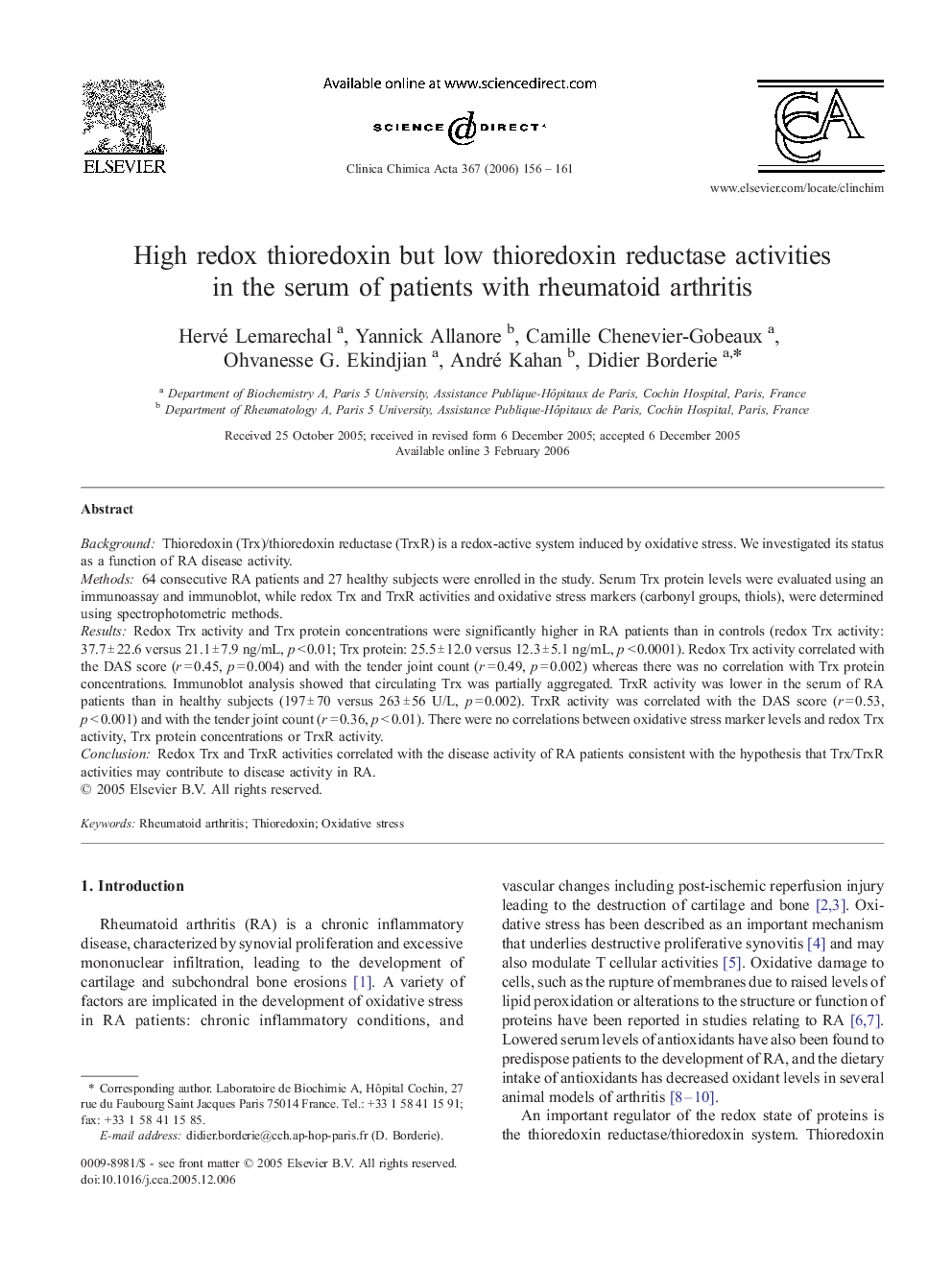| Article ID | Journal | Published Year | Pages | File Type |
|---|---|---|---|---|
| 1968095 | Clinica Chimica Acta | 2006 | 6 Pages |
BackgroundThioredoxin (Trx)/thioredoxin reductase (TrxR) is a redox-active system induced by oxidative stress. We investigated its status as a function of RA disease activity.Methods64 consecutive RA patients and 27 healthy subjects were enrolled in the study. Serum Trx protein levels were evaluated using an immunoassay and immunoblot, while redox Trx and TrxR activities and oxidative stress markers (carbonyl groups, thiols), were determined using spectrophotometric methods.ResultsRedox Trx activity and Trx protein concentrations were significantly higher in RA patients than in controls (redox Trx activity: 37.7 ± 22.6 versus 21.1 ± 7.9 ng/mL, p < 0.01; Trx protein: 25.5 ± 12.0 versus 12.3 ± 5.1 ng/mL, p < 0.0001). Redox Trx activity correlated with the DAS score (r = 0.45, p = 0.004) and with the tender joint count (r = 0.49, p = 0.002) whereas there was no correlation with Trx protein concentrations. Immunoblot analysis showed that circulating Trx was partially aggregated. TrxR activity was lower in the serum of RA patients than in healthy subjects (197 ± 70 versus 263 ± 56 U/L, p = 0.002). TrxR activity was correlated with the DAS score (r = 0.53, p < 0.001) and with the tender joint count (r = 0.36, p < 0.01). There were no correlations between oxidative stress marker levels and redox Trx activity, Trx protein concentrations or TrxR activity.ConclusionRedox Trx and TrxR activities correlated with the disease activity of RA patients consistent with the hypothesis that Trx/TrxR activities may contribute to disease activity in RA.
